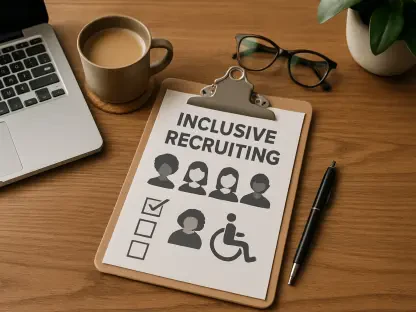The technology industry is increasingly recognizing the importance of diversity, not just as a matter of social justice but as a key driver of innovation and success. Despite this awareness, achieving diversity within IT teams remains a significant challenge. IT recruiters are at the forefront of this effort, adopting innovative strategies to overcome bias and promote inclusivity in hiring processes.
Understanding Unconscious Bias in Hiring
The Impact of Unconscious Bias
Unconscious biases in hiring can unintentionally favor certain demographics, perpetuating a lack of diversity. These biases might manifest in various forms, such as preferences related to gender, race, age, educational background, or even particular institutions. For instance, recruiters might prioritize candidates from prestigious universities or well-known tech companies, neglecting equally qualified individuals from diverse or less prominent backgrounds. This tendency not only narrows the talent pool but also stifles innovation by creating homogeneous teams that lack varied perspectives.
The implications of these biases are profound. A homogenous team may lead to stagnation rather than evolution, as team members may come up with similar ideas or solutions. On the other hand, diverse teams bring a variety of viewpoints, which can drive innovation and lead to cutting-edge solutions. This perpetuation of bias in hiring, however unintended, undermines efforts to create inclusive teams and can have long-lasting effects on the company’s growth and adaptability. By acknowledging and addressing these unintentional biases, IT recruiters can pave the way toward a more innovative and inclusive work environment.
Recognizing Bias in Recruitment Practices
There may also be a tendency to favor candidates who resemble existing team members in terms of race, gender, or personality. This form of unconscious bias can significantly hinder an organization’s ability to innovate and evolve by missing out on a wide range of qualified candidates. Recognizing and addressing these biases is the first step towards creating a more inclusive hiring process. IT recruiters are now becoming increasingly aware of these subtle biases and are taking proactive measures to counteract them.
Initiatives such as bias training for hiring managers and recruiters are gaining traction. These training programs aim to educate on the existence of unconscious biases and provide tools to recognize and mitigate them during the recruitment process. Additionally, technologies like artificial intelligence and machine learning are being employed to scrutinize hiring patterns and highlight potential biases. By incorporating such measures, recruiters can create a more equitable hiring process that values diversity and inclusivity, leading to a richer talent pool and a more innovative company.
Implementing Structured and Standardized Hiring Processes
The Role of Structured Interviews
IT recruiters are now implementing structured and standardized hiring processes to mitigate bias. Structured interviews, for example, ensure that all candidates are evaluated based on consistent criteria, reducing subjective judgments. Consistency in questioning and evaluation means that each candidate is assessed on their merits, based on relevant skills and experiences rather than personal biases. This level of standardization is crucial in making objective hiring decisions that are fair to all applicants.
Structured interviews often involve predefined questions that are relevant to the job and competencies required, making the assessment criteria clear and measurable. This method helps in eliminating spontaneous, potentially biased, or irrelevant questions that could unfairly sway the interview outcome. By focusing on job-relevant skills and experiences, recruiters can make more objective decisions, thus paving the way for a more diverse and skilled workforce. This approach not only promotes fairness but also increases the chances of selecting the best candidates for the roles.
Benefits of Standardized Evaluation
Standardized evaluation methods help in creating a level playing field for all candidates. This approach minimizes the influence of personal biases and ensures that hiring decisions are based on merit and relevant qualifications. For instance, assessment tools such as skills tests, coding challenges, and work samples can provide objective data on candidate capabilities, reducing the weight of subjective impressions from interviews. This evidence-based approach helps recruiters make more informed decisions.
Additionally, standardized evaluations can help companies track patterns and identify any disparities in hiring practices. By regularly reviewing the data from these evaluations, recruiters can spot trends that might indicate biased practices and take corrective measures accordingly. This ongoing assessment and refinement of the hiring process are essential in building a more diverse and capable workforce. Standardization ultimately supports the broader goal of cultivating a dynamic and innovative tech team, by ensuring that talented individuals from all backgrounds have an equal opportunity to succeed.
Adopting Blind Recruitment Practices
Anonymizing Resumes
Blind recruitment practices are another strategy being adopted by IT recruiters. This approach anonymizes resumes by removing personally identifiable information such as names, gender, and photos. By focusing purely on skills, experience, and qualifications, recruiters can avoid unconscious biases related to race, gender, or ethnicity. This method helps in ensuring a fair evaluation of all candidates, based on their competence and potential rather than extraneous factors that could lead to biased assessments.
Anonymizing resumes can reveal the true potential of candidates who might otherwise be overlooked due to their backgrounds. By eliminating indicators that could trigger unconscious biases, recruiters can better appreciate the diverse experiences and skills that candidates bring to the table. This practice not only promotes fairness but also enriches the talent pool with individuals who might have been dismissed prematurely in a traditional hiring process. Blind recruitment can therefore play a significant role in fostering a more diverse and inclusive workplace.
Ensuring Fair Evaluation
This practice levels the playing field and ensures that every candidate’s potential is evaluated fairly. It helps in identifying the best talent based on their abilities and contributions rather than their background or appearance. Moreover, the initial blind assessment can be complemented by standardized testing or assignments that further emphasize skills over subjective impressions. The result is a more objective and equitable hiring process that prioritizes talent over preconceived notions.
Adopting blind recruitment practices can also send a strong message within the organization and to prospective employees regarding the company’s commitment to diversity and inclusion. It demonstrates that the company values fairness and is dedicated to providing equal opportunities to all candidates. Over time, this can enhance the company’s reputation as an inclusive employer, attracting diverse talent who feel confident that their merits will be fairly evaluated. This inclusivity not only benefits individual candidates but also strengthens the organization by bringing in varied perspectives and innovative solutions.
Crafting Inclusive Job Descriptions
The Importance of Language
The language used in job postings can significantly impact the diversity of applicants. Terms like “aggressive,” “dominant,” or “strong” may deter female candidates, while emphasizing “cultural fit” can unintentionally favor those who resemble the existing team. Language that appears neutral at first glance might still carry implicit biases that affect who feels encouraged to apply. The subtle yet powerful influence of job description language makes it essential for recruiters to carefully craft their listings to be inclusive.
Inclusive language doesn’t merely avoid deterring potential applicants; it actively encourages diverse candidates to apply. Job descriptions should highlight the company’s commitment to diversity and inclusion, making it clear that candidates from all backgrounds are welcome. Including statements about equal opportunity employment and the company’s diversity initiatives can make a significant difference. By focusing on essential skills and competencies rather than specific backgrounds or attributes, recruiters can attract a broader range of qualified candidates who might otherwise pass on the opportunity.
Creating Neutral and Inclusive Descriptions
IT recruiters are now trained to use neutral, inclusive language that encourages applicants from diverse backgrounds. Highlighting the organization’s commitment to diversity and inclusion in job postings can also attract a broader pool of candidates. Descriptions that emphasize diverse perspectives and experiences can make positions more appealing to a wider audience. Recruiters are increasingly aware of the importance of describing the role and its requirements in a way that is welcoming to all potential applicants.
This shift in language and emphasis helps open the door to a wider range of talent by focusing on key competencies and transferable skills rather than specific technical experiences. For example, instead of demanding a certain number of years in a very specific field, recruiters might focus on the candidate’s ability to learn quickly or their experience with comparable technologies. This approach not only broadens the applicant pool but also highlights the company’s progressive stance on diversity and inclusion. Overall, the effort to craft inclusive job descriptions is a vital step toward building a more diverse and innovative tech team.
Expanding the Candidate Pool
Beyond Traditional Sources
To expand the candidate pool, IT recruiters are looking beyond traditional sources such as tech job boards, coding boot camps, or top-tier universities, which often represent a narrow subset of the population. They are partnering with organizations that focus on diversity in tech, such as women’s tech groups or organizations supporting underrepresented minorities in STEM fields. This strategy allows recruiters access to talented individuals who might not be visible through conventional hiring channels, thus enriching the pool with diverse candidates.
Moreover, collaborating with these organizations helps in establishing long-term relationships that can continually provide access to diverse talent. Such partnerships can offer insights into the challenges faced by underrepresented groups and help recruiters tailor their strategies accordingly. Participation in events, sponsorship of diversity initiatives, and involvement in community programs are some ways through which recruiters can engage with these organizations. These efforts not only expand the reach for potential candidates but also enhance the company’s reputation as a supporter of diversity.
Leveraging Social Media and Community Boards
Social media platforms like LinkedIn and Twitter, along with specialized community boards, are also being leveraged to reach a broader range of candidates. Posts and advertisements aimed at diverse audiences can attract applicants who might not be actively seeking traditional job postings but come across opportunities through their networks. These platforms also allow recruiters to engage in discussions, join relevant groups, and directly interact with potential candidates, creating more personalized and meaningful connections.
Moreover, involvement in initiatives that provide mentorship, internships, and apprenticeships to underrepresented candidates is becoming more common. These initiatives not only offer valuable work experience but also help build a pipeline of diverse talent for future roles. Programs that focus on upskilling and career development for underrepresented groups can prepare a new generation of tech professionals ready to take on challenging roles. By investing in these initiatives, companies can ensure a steady inflow of diverse talent and support the long-term goal of a more inclusive tech industry.
Fostering Inclusive Cultures Post-Hiring
Creating an Inclusive Environment
Ensuring that diverse hires are successfully integrated into the organization is crucial. An inclusive culture where new hires feel valued and supported is essential for retention. IT recruiters collaborate with hiring managers and HR teams to promote workplace flexibility, equal growth opportunities, and a zero-tolerance approach to discrimination and harassment. Creating initiatives such as employee resource groups, diversity councils, and inclusion training programs are steps towards building a welcoming environment for all employees.
Workplace flexibility, in particular, can significantly benefit a diverse workforce. Policies that support remote work, flexible hours, and family leave can make it easier for employees from various backgrounds to balance work and personal life. Furthermore, fostering a culture of open communication and feedback allows employees to voice their concerns and contribute ideas without fear of reprisal. Ensuring that everyone feels heard and valued is key to developing an inclusive work environment where employees from diverse backgrounds can thrive.
Supporting Career Development
Onboarding programs, mentorship opportunities, and inclusive workplace policies all contribute to an environment where diverse employees can thrive. By providing support systems such as mentorship programs, new hires can find guidance and advice from experienced professionals who understand the unique challenges they might face. This support can help them navigate the organization effectively and build their careers. Inclusive workplace policies that promote equal opportunity for advancement ensure that everyone has the chance to grow and succeed within the company.
Moreover, providing access to leadership roles and career development programs for diverse employees helps build a sustainable, inclusive workforce. Leadership programs designed to identify and nurture talent from underrepresented groups can create a pipeline of future leaders who bring diverse perspectives to the company. By actively investing in the professional development of all employees, companies can ensure that their leadership reflects the diversity of their workforce. This approach not only supports individual career growth but also strengthens the organization as a whole by leveraging a broad range of skills and viewpoints.
Utilizing Data-Driven Metrics
Tracking Progress
Data-driven metrics play a critical role in tracking progress towards diversity. By monitoring diversity across different hiring stages—from applications to interviews to hires—recruiters can identify where biases might still exist. This data helps in making informed adjustments and continuously improving recruitment processes. For example, if the data shows that a particular demographic is consistently underrepresented among applicants or hires, recruiters can investigate potential reasons and address them through targeted outreach or changes in the hiring process.
Using data analytics also allows companies to set measurable goals for diversity and inclusion. These goals can be tracked over time to assess the effectiveness of various initiatives and make necessary adjustments. Regularly reviewing and analyzing this data helps organizations remain accountable and committed to their diversity objectives. Metrics can also provide insights into the experiences of diverse employees post-hiring, aiding in the development of strategies to improve retention and satisfaction within the workplace.
Ensuring Accountability
The technology industry is increasingly recognizing the importance of diversity, not just as a matter of social justice but also as a key driver of innovation and success. Diverse teams bring a variety of perspectives, which leads to more creative solutions and a stronger competitive edge. Despite this growing awareness, achieving diversity within IT teams remains a significant challenge. One of the primary obstacles is overcoming long-standing biases in hiring practices that can inadvertently exclude qualified candidates from underrepresented groups.
IT recruiters play a crucial role in addressing these challenges. They are at the forefront of efforts to promote inclusivity and diversity in hiring processes. To do this, they are adopting innovative strategies designed to minimize bias. This includes utilizing blind recruitment techniques where identifying details are removed from resumes during initial screenings. Additionally, recruiters are turning to AI-driven tools to help eliminate unconscious bias.
Furthermore, companies are investing in diversity training programs to ensure that hiring managers are aware of their biases and equipped to overcome them. Another effective strategy is expanding the talent pool by reaching out to candidates from non-traditional backgrounds and creating partnerships with organizations that support underrepresented groups in tech.
Ultimately, while the road to achieving true diversity in IT teams is challenging, it is a worthwhile endeavor. Embracing diverse talent is not only the right thing to do socially but also a strategic move that can lead to greater innovation and success in the highly competitive tech industry.









